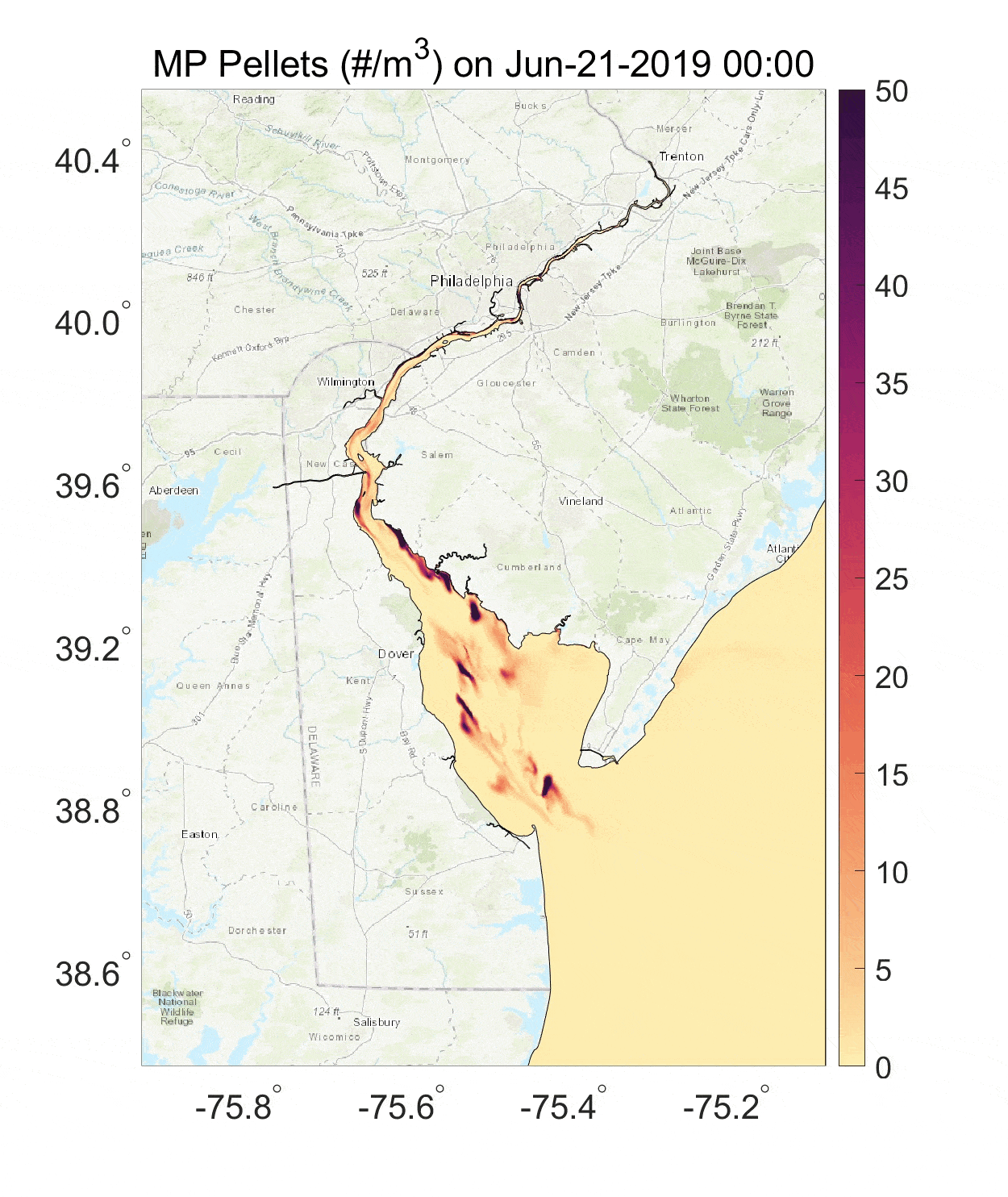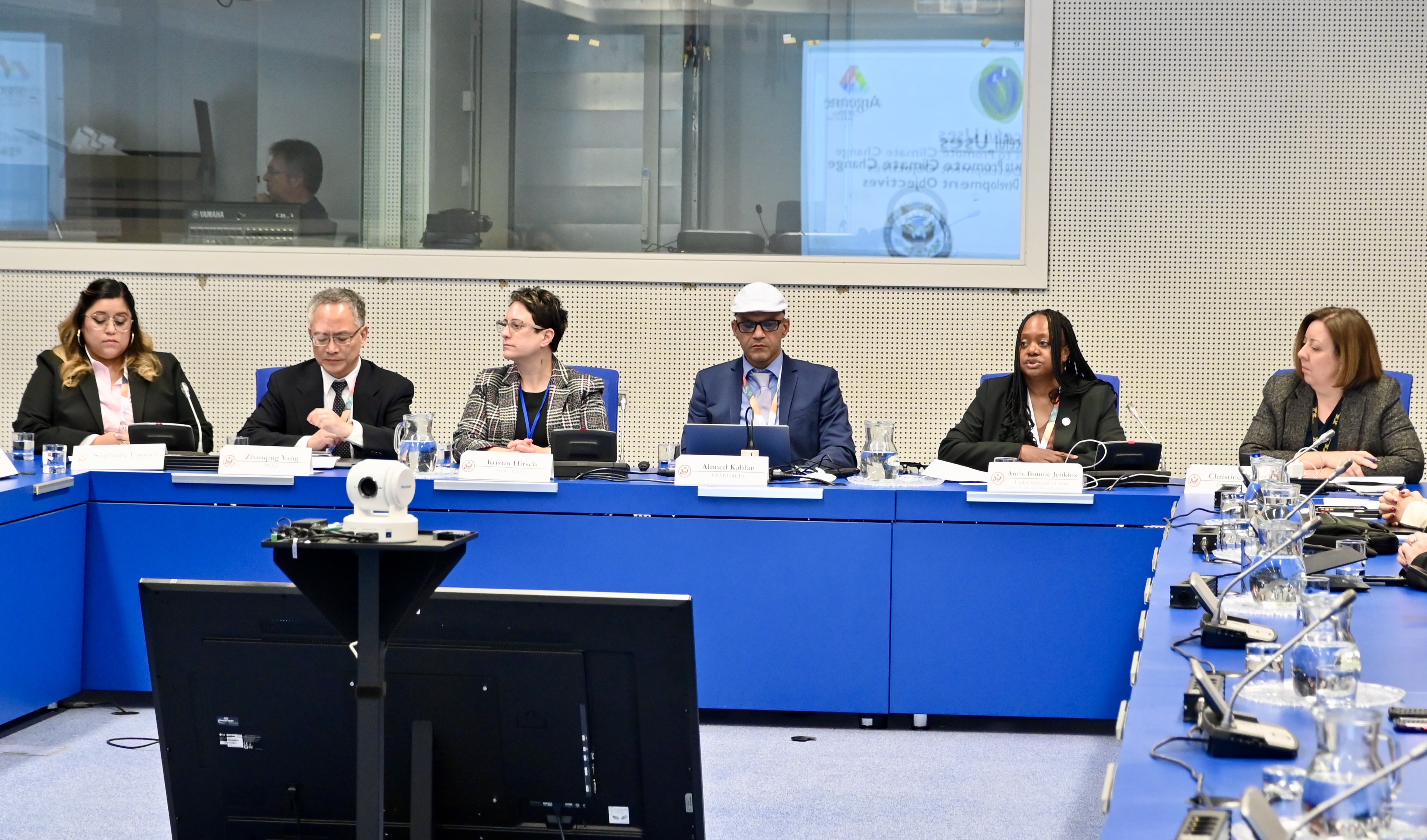How do Particles Move Through Rivers to Coasts?
New research predicts the movement of microplastics through U.S. waterways to the coast

This model shows the movement of microplastics between the riverine and coastal environments of the Delaware River region.
(Graphic courtesy of Yicheng Huang | Pacific Northwest National Laboratory)
Called the arteries of the nation, U.S. waterways are valuable natural resources and key routes for transporting people and goods—but that’s not all they transport. On a microscopic level, particles from a variety of sources—including from sectors such as industry, commerce, and transportation—enter U.S. rivers and are transported to the coasts. Understanding the detailed movement of these particles through U.S. waterways can have broad applications in industry, health, and coastal research.

Researchers at Pacific Northwest National Laboratory (PNNL) have developed the first watershed-to-sea transport model for small plastic particles, called microplastics. The model details how different sizes, shapes, and material properties affect their transport through U.S. waterways to the ocean, using both computer modeling and field measurements of microplastic movement.
“Microplastics are a focus because they might have impacts on ecosystems and humans. It is critical to predict the pathways from rivers to the coasts and understand the degradation and transformation of microplastics in aquatic systems,” says Zhaoqing Yang, chief scientist of coastal ocean modeling at PNNL.
Major challenges to modeling the movement of microplastics in water are the lack of field measurements and physics-based, watershed-scale modeling tools. PNNL researchers, in collaboration with the National Renewable Energy Laboratory (NREL), are addressing this by developing novel modeling tools integrated with field observations to predict the fate and transport of microplastics from watersheds to coasts.
Measuring microplastics in rivers and coasts
The field measurements and modeling work are part of Waterborne Plastics Assessment and Collection Technologies (WaterPACT), a collaborative project between PNNL, NREL, and EMSL, the Environmental Molecular Sciences Laboratory, a Department of Energy, Office of Science National User Facility located at PNNL. WaterPACT tunes computer modeling with field measurements from U.S. rivers.

“This model incorporates size, shape, and density properties of microplastic particles to predict how fast they settle in the water column, resuspend from the seabed, and how that affects their eventual transport to the coastal oceans,” said Yicheng Huang, post-doctoral research associate in ocean modeling at PNNL. “We focused on microplastics to develop the model, but the underlying dynamics are relevant for understanding the movement of all types of particles in waterways.”
A novel modeling framework has been developed within WaterPACT that couples the hydrological and coastal circulation models to simulate the processes of watershed runoff, river routing, and coastal transport of microplastics. The research team has successfully tested this modeling framework using the Delaware River Basin and Estuary as a testbed.
Ruth Branch, an Earth scientist at PNNL, oversaw sampling efforts in the field and worked with local universities and the U.S. Environmental Protection Agency (EPA) to sample the Columbia, Los Angeles, Mississippi, and Delaware Rivers to characterize microplastics in different regions and seasons.
“Sampling during different conditions, including after rain storms when water levels were high, provided valuable data to configure models that can provide accurate predictions of particle transport under a wide range of conditions,” said Branch.
Future work on the model development will show how different weather conditions can impact particulate transport and accumulation in watersheds, rivers, estuaries, and oceans.
Global impacts of microplastic models

WaterPACT’s efforts to model the movement of microplastics in waterways has received global recognition.
Zhaoqing Yang was invited to present details of the data collection and modeling efforts to the United Nations as part of the U.S. delegation at the International Atomic Energy Agency (IAEA) Ministerial Conference in 2024. Yang’s presentation elevated PNNL’s visibility at the conference, and the research was highly praised by the Undersecretary of State for Arms Control and International Security, Ambassador Bonnie Jenkins, and Ambassador to UN Vienna, Laura S.H. Holgate.
WaterPACT’s work is being continued at PNNL as part of the Lab Directed Research and Development (LDRD) program in collaboration with the University of Washington to study the impact of these microparticles on fish and other river organisms.
WaterPACT is funded by the Department of Energy’s Water Power Technologies Office.
Read the published work here: https://www.sciencedirect.com/science/article/pii/S0025326X25005491
Published: July 24, 2025